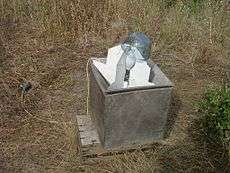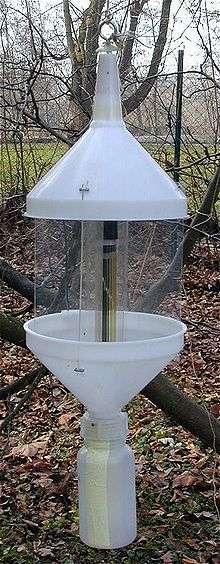Moth trap

Moth traps are devices used by entomologists to capture moths. Most use a light source (light trap).
All moth traps follow the same basic design - consisting of a mercury vapour or actinic light to attract the moths and a box in which the moths can accumulate and be examined later. The moths fly towards the light and spiral down towards the source of the light and are deflected into the box. Besides moths, several other insects will also come to light, such as scarab beetles, Ichneumonid wasps, stink bugs, stick insects, diving beetles, and water boatmen. Occasionally diurnal species such as dragonflies, yellowjacket wasps, and hover flies will also visit.

The reason insects and especially particular families of insect (e.g. moths), are attracted to light is uncertain . The most accepted theory is that moth migrate using the moon and stars as navigational aids and that the placement of a closer than the moon light causes subtended angles of light at the insects eye to alter so rapidly that it has to fly in a spiral to reduce the angular change -- this resulting in the insect flying into the light. Yet the reason some diurnal insects visit is entirely unknown.

Some moths, notably Sesiidae are monitored or collected using pheromone traps.
See also
References
- Paul Waring, 2001 A Guide to Moth Traps and Their Use Amateur Entomologists' Society.
External links
| Wikimedia Commons has media related to Moth traps. |
- Moth-trapping Part I: Basic equipment
- Moth-trapping Part II: Methods and techniques
- Moth Recorders Handbook
- Moth Traps and Treatment
